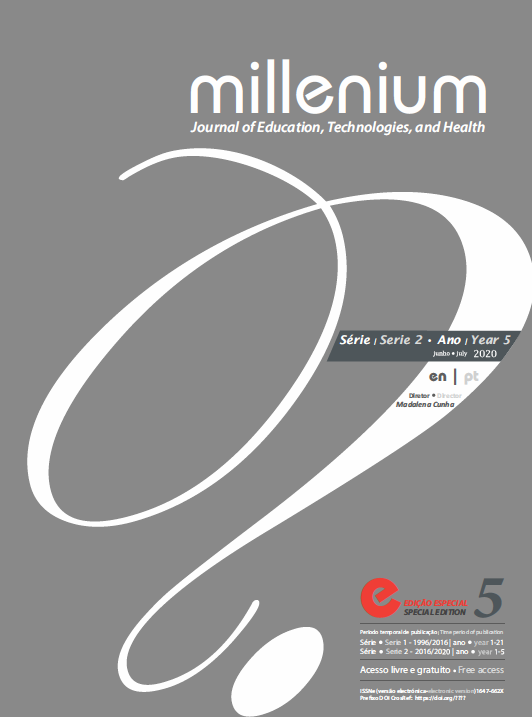Colaborative integrated learning
study case of aplication to food engineering
DOI:
https://doi.org/10.29352/mill0205e.01.00251Keywords:
assessment risks, learning outcomes, innovative learningAbstract
Introduction: Collaborative learning comprises a set of teaching/learning methods in which students are stimulated to work together in order to fulfil a common learning goal. This approach has been adopted throughout a very wide variety of disciplines, curricula, school environments, teaching approaches or age groups.
Objectives: The objective of this work was to discuss the advantages and drawbacks of using innovative learning tools or techniques to promote active learning from a real practice experience.
Methods: The integrated learning on subjects in area of Food Engineering was analysed based on the learning outcomes, advances of collaborative work, difficulties found, problem solving strategies and learning assessment limitations.
Results: The results obtained allowed concluding that the integrated project developed in the 3 different syllabus is beneficial and the students tend to engage in the requested activities with true commitment; this approach allows the development of complementary competences and far beyond simple knowledge; and finally, it prepares the students for real life experiences, while guarantying a fair evaluation of learning outcomes for all while still at university.
Conclusions: This work highlighted the need to deepen the debate on this topic in order to improve students’ knowledge and learning skills.
Downloads
References
Grossberg, S. (2013). Adaptive Resonance Theory: how a brain learns to consciously attend, learn, and recognize a changing world. Neural Netw 37, 1–47.
Haataja, E., Malmberg, J., & Järvelä, S. (2018). Monitoring in collaborative learning: Co-occurrence of observed behavior and physiological synchrony explored. Computers in Human Behavior 87, 337–347.
Järvenoja, H., Järvelä, S., & Malmberg, J. (2017). Supporting groups’ emotion and motivation regulation during collaborative learning. Learning and Instruction.
Kulikovskikh, I.M., Prokhorov, S.A., & Suchkova, S.A. (2017). Promoting collaborative learning through regulation of guessing in clickers. Computers in Human Behavior 75, 81–91.
Mawdsley, A., & Willis, S. (2018). Exploring an integrated curriculum in pharmacy: Educators’ perspectives. Currents in Pharmacy Teaching and Learning 10, 373–381.
Mu, J.E., & Ziolkowska, J.R. (2018). An integrated approach to project environmental sustainability under future climate variability: An application to U.S. Rio Grande Basin. Ecological Indicators 95, 654–662.
Niranjan, K. (2016). A possible reconceptualization of food engineering discipline. Food and Bioproducts Processing 99, 78–89.
Ouko, E.M. (2018). Contextualising integrated conservation and development projects: Restoring the lost ‘harambee’ link in Kenya. Geoforum 92, 81–91.
Servant-Miklos, V.F.C. (2018). The Harvard Connection: How the Case Method Spawned Problem-Based Learning at McMaster University. Health Professions Education.
Stahovich, T.F., Van Arsdale, T.S., & Mayer, R.E. (2019). How handwriting behaviors during problem solving are related to problem-solving success in an engineering course. Contemporary Educational Psychology 58, 331–337.
Taraban, R. (2011). Information Fluency Growth Through Engineering Curricula: Analysis of Students’ Text-Processing Skills and Beliefs. Journal of Engineering Education 100, 397–416.
Zhang, J., & Cui, Q. (2018). Collaborative Learning in Higher Nursing Education: A Systematic Review. Journal of Professional Nursing.
Downloads
Published
How to Cite
Issue
Section
License
Authors who submit proposals for this journal agree to the following terms:
a) Articles are published under the Licença Creative Commons (CC BY 4.0), in full open-access, without any cost or fees of any kind to the author or the reader;
b) The authors retain copyright and grant the journal right of first publication, allowing the free sharing of work, provided it is correctly attributed the authorship and initial publication in this journal;
c) The authors are permitted to take on additional contracts separately for non-exclusive distribution of the version of the work published in this journal (eg, post it to an institutional repository or as a book), with an acknowledgment of its initial publication in this journal;
d) Authors are permitted and encouraged to publish and distribute their work online (eg, in institutional repositories or on their website) as it can lead to productive exchanges, as well as increase the impact and citation of published work
Documents required for submission
Article template (Editable format)





